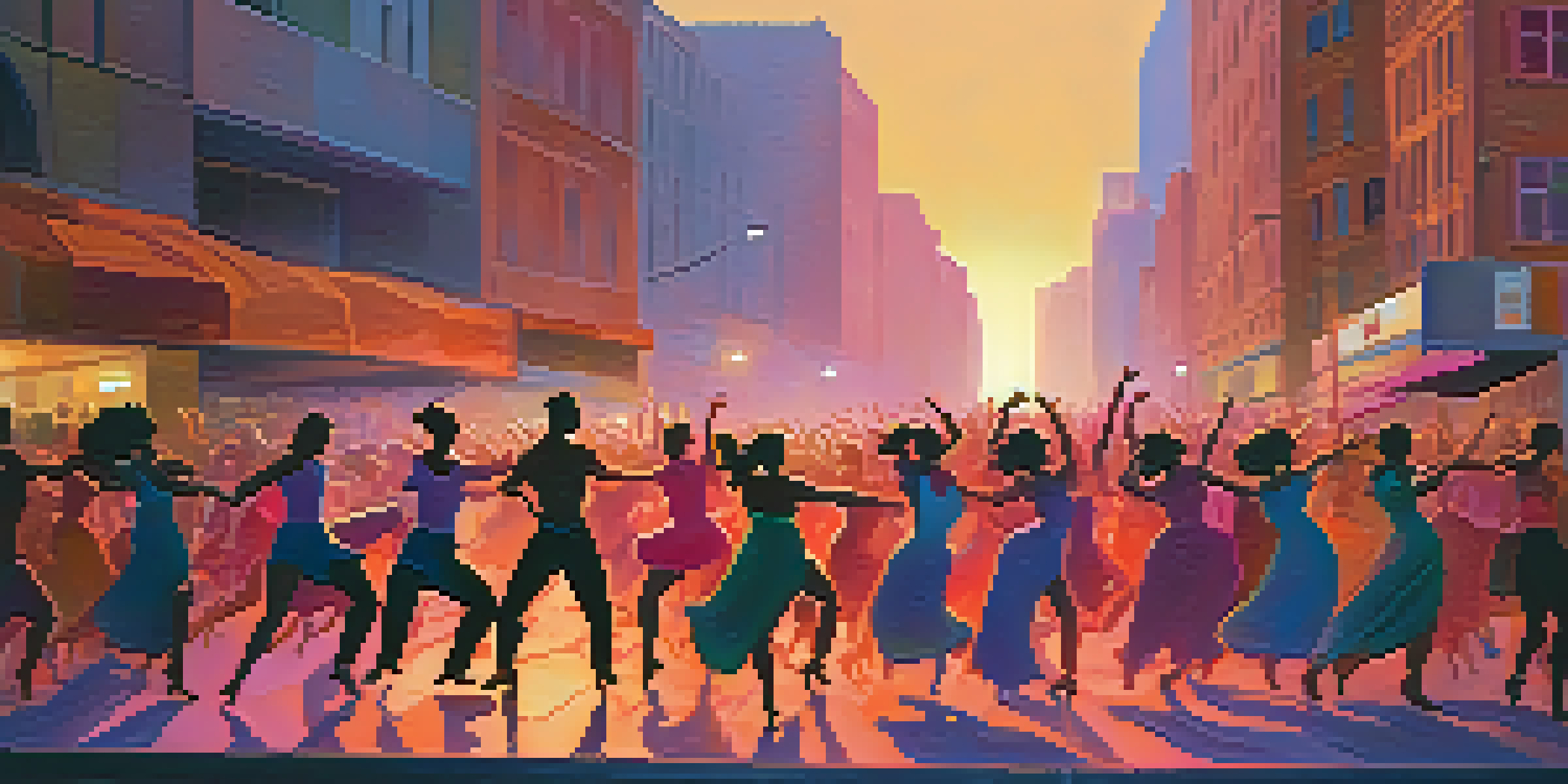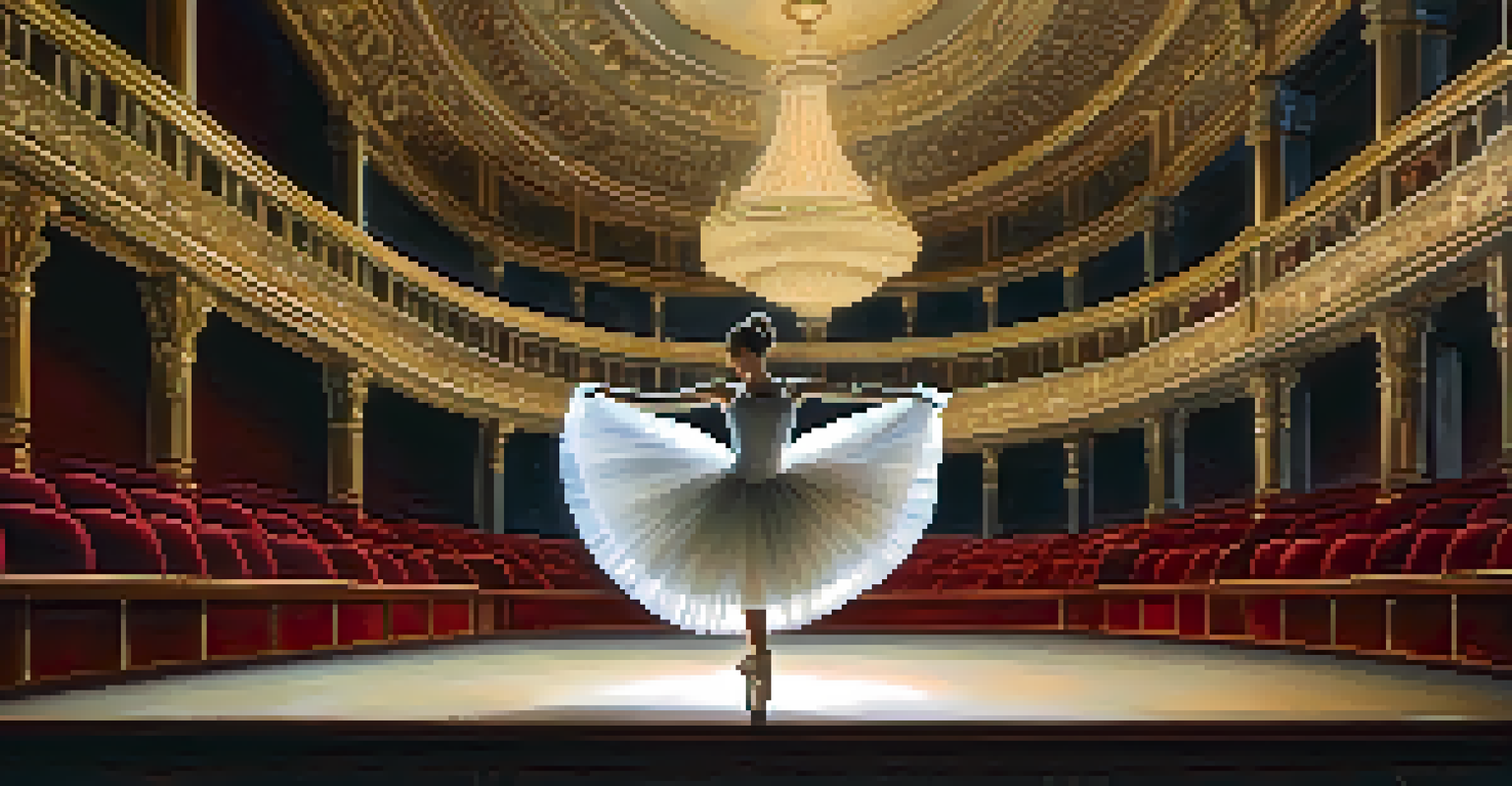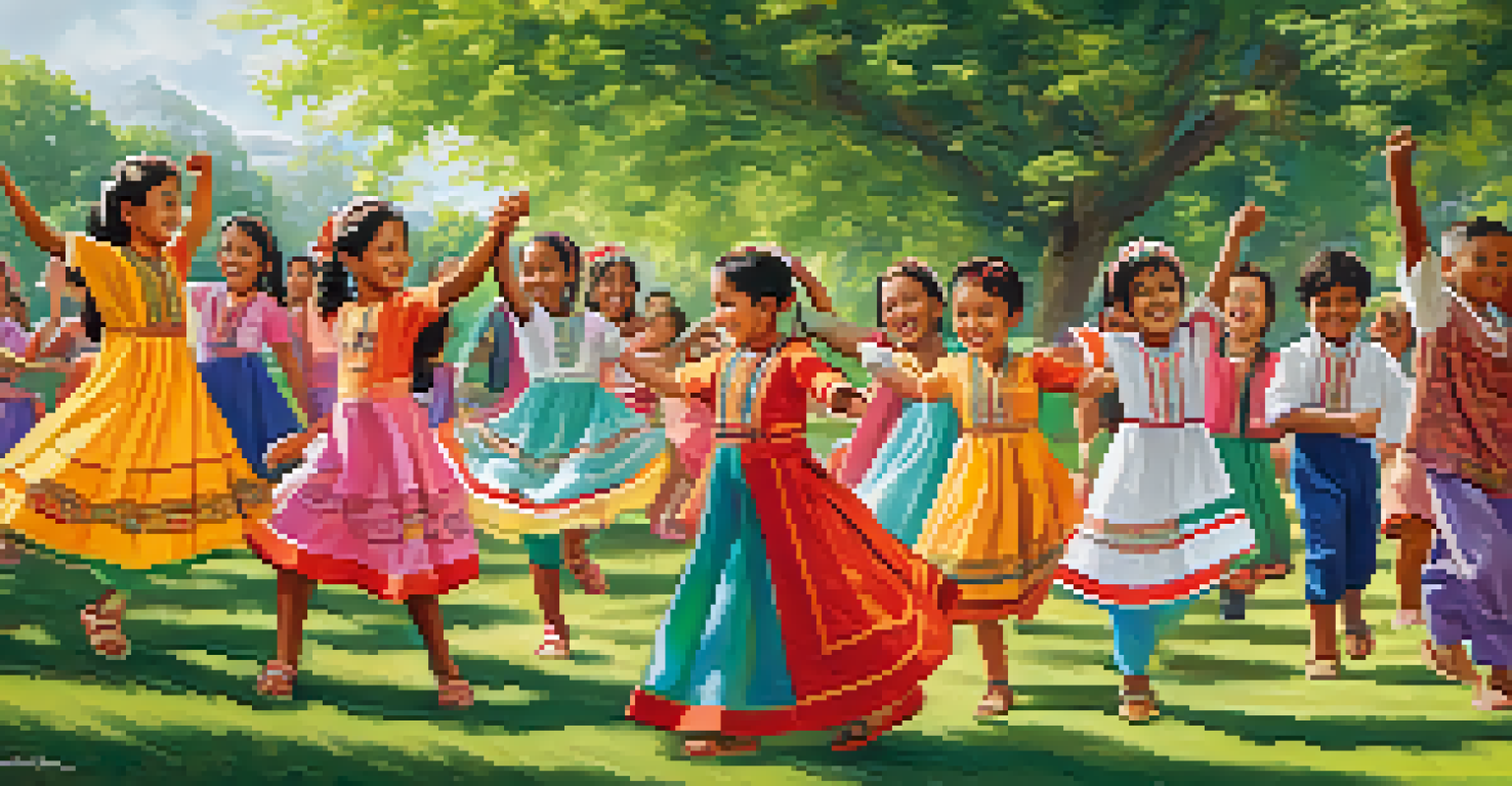Dance as a Narrative Device in Contemporary Film Storytelling

Understanding Dance as a Storytelling Tool
Dance has evolved from mere entertainment to a powerful narrative device in film. It allows filmmakers to convey emotions and themes without relying solely on dialogue. Through movement, characters can express their inner struggles, desires, and transformations, often in ways that words cannot capture.
Dance is the hidden language of the soul.
For instance, in films like 'La La Land,' dance sequences serve as emotional punctuation marks, highlighting pivotal moments in the characters' journeys. This approach creates a visual language that resonates deeply with audiences, drawing them into the characters' experiences. As a result, dance becomes a vital part of the storytelling process.
Moreover, dance sequences can bridge cultural gaps, allowing filmmakers to communicate universal themes. By incorporating different dance styles, stories can reflect diverse backgrounds and perspectives, enriching the narrative tapestry of contemporary cinema.
Historical Context of Dance in Film
The integration of dance in film isn't a new concept; it has roots in early cinema with musicals and vaudeville acts. These performances set the stage for dance to become a pivotal element in storytelling. Iconic films like 'Singin' in the Rain' showcased how dance could elevate the narrative, blending plot and performance seamlessly.

As cinema evolved, so did the role of dance. Directors began to experiment with choreography as a means of expressing character arcs and pivotal plot points. This shift marked a significant transformation in how audiences perceive dance—not just as entertainment, but as a form of storytelling.
Dance as a Narrative Device
Dance conveys emotions and themes in film, allowing characters to express their inner struggles without dialogue.
In contemporary films, we see this legacy continued, with directors embracing innovative choreography to enhance their narratives. This historical context underscores how far dance has come in cinematic storytelling, paving the way for modern interpretations.
The Emotional Impact of Dance Sequences
One of the most compelling reasons filmmakers utilize dance is its emotional potency. A well-choreographed dance can evoke feelings ranging from joy to sorrow, often without a single word spoken. For example, the heartbreaking ballet in 'Black Swan' illustrates the protagonist's descent into madness, allowing viewers to feel her turmoil viscerally.
Through movement, we can express what words cannot.
These sequences can also create a sense of catharsis for both characters and audiences. When characters express their emotions through dance, it invites viewers to connect on a deeper level. This shared experience can be incredibly powerful, often leaving a lasting impression long after the credits roll.
Additionally, dance can symbolize change or transformation within a character. In 'The Shape of Water,' the dance between the leads encapsulates their connection and longing, reinforcing the narrative's themes of love and acceptance. Such moments make dance an essential tool in crafting emotional arcs.
Choreography as a Reflection of Character Development
Choreography can serve as a mirror for a character's growth throughout a film. As characters evolve, their dance styles and movements often change, reflecting their emotional states. In 'Footloose,' for instance, the protagonist's journey from repression to liberation is illustrated through increasingly expressive dance.
This relationship between choreography and character development allows audiences to visually track a character's journey. Each dance sequence can be read as a chapter in their personal narrative, marking significant milestones or turning points. This technique enriches the overall storytelling experience.
Emotional Impact of Dance
Well-choreographed dance sequences evoke powerful emotions, creating a deeper connection between characters and audiences.
Moreover, the choice of dance style can reveal a character's background or personality traits. A character who dances with precision may embody discipline, while another with free-flowing movements might represent spontaneity. These subtle cues add depth to the narrative, making it more engaging.
Cultural Significance of Dance in Film
Dance often serves as a cultural touchstone, providing insight into the traditions and values of different communities. Films like 'Coco' celebrate cultural heritage through vibrant dance sequences that tell stories rooted in specific traditions. This not only enriches the narrative but also educates audiences about diverse cultures.
In contemporary storytelling, filmmakers are increasingly using dance as a means of social commentary. By incorporating traditional dance forms, they can challenge stereotypes and highlight issues related to identity and belonging. This approach fosters a deeper understanding of the cultural contexts within which these stories unfold.
Furthermore, dance can act as a unifying force, bringing people together across cultural divides. Films that showcase a blend of dance styles highlight the beauty of cross-cultural collaboration, emphasizing shared human experiences and connections.
The Role of Music in Dance Narratives
Music and dance are intrinsically linked, and this relationship plays a crucial role in storytelling. The right score can enhance the emotional weight of a dance sequence, making it more impactful. For example, the haunting melodies in 'Dirty Dancing' elevate the iconic dance scenes, making them unforgettable.
Moreover, the rhythm and tempo of the music can dictate the mood and energy of a dance sequence. Fast-paced music might evoke excitement and joy, while slower melodies can convey sadness or reflection. This interplay allows filmmakers to craft a more nuanced narrative, using dance as a form of expression.
Cultural Significance of Dance
Dance reflects cultural heritage and values, serving as a tool for social commentary and fostering understanding of diverse communities.
Additionally, music can serve as a narrative device itself, with lyrics that echo the characters' journeys. In films where dance is central to the storytelling, the combination of music and movement creates a rich tapestry that resonates with audiences, enhancing their overall viewing experience.
Future Trends: Dance in Film Storytelling
As film continues to evolve, so too does the role of dance within storytelling. Emerging technology, such as virtual reality, offers exciting possibilities for immersive dance narratives. Imagine experiencing a dance sequence from within, feeling the energy and emotions firsthand—a new frontier for filmmakers and audiences alike.
Moreover, the rise of social media has transformed how dance is perceived and integrated into film. Platforms like TikTok have popularized dance challenges, influencing filmmakers to incorporate trending movements into their narratives. This reflects a cultural shift where dance is not just an art form, but a dynamic element of contemporary storytelling.

As we look to the future, it's clear that dance will continue to play a vital role in film. Its ability to convey complex emotions and narratives will ensure its place as a beloved storytelling device for years to come.